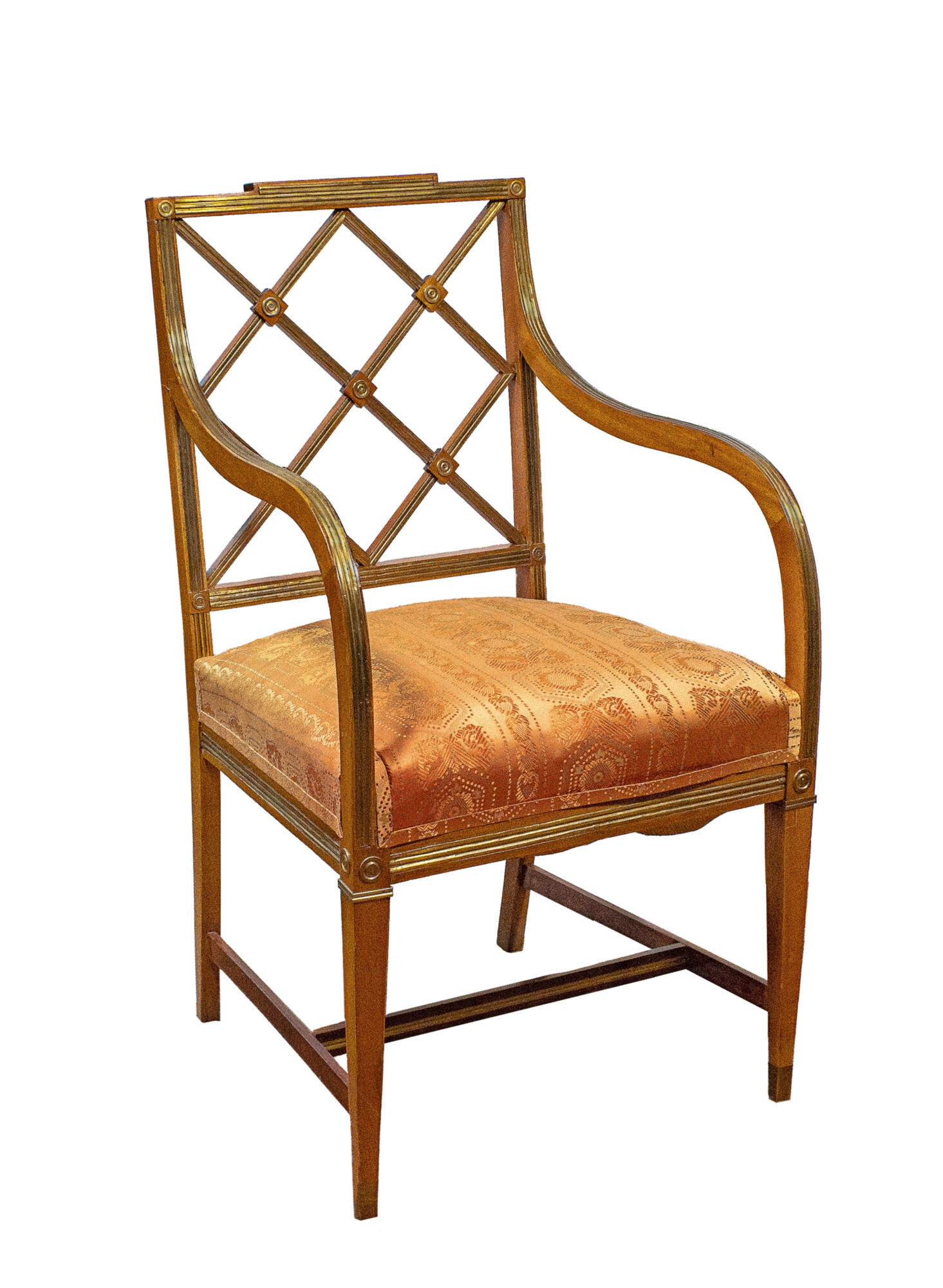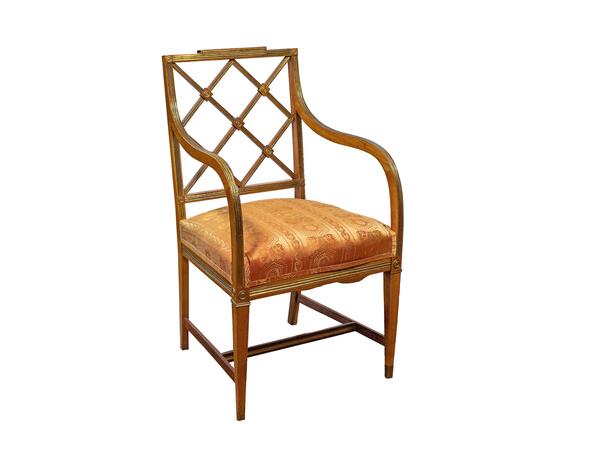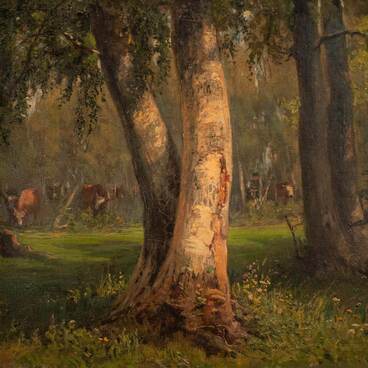The interior of noble estates in the 18th — 19th centuries often featured mahogany furniture, which stood out for its austere forms, corrugated brass ornaments and rosettes — round inserts. It became popular immediately for the furniture had a simplified appearance, however, it looked splendid at the same time, and it was also cheap to produce. It was sold not only in the capital but also in provincial shops.
Such furniture remained popular until the mid-19th century. In Russia, this style was called Jacob — after the famous French master Georges Jacob.
Georges Jacob was born in 1739 in Cheny, on the outskirts of Burgundy. He began to study furniture art in Paris under the imperial furniture maker Louis Delanois. During his early years, Jacob imitated another great French master, André-Charles Boulle, but by the early 1780s, he had developed his own style.
Its characteristic features are simplicity of furniture designs, clarity and harmony of proportions, and calm balance of components. The master preferred straight lines. Furniture legs were always tapered downward to emphasize the elegance of sofas, chairs and armchairs.
One of the main features of the Jacob style is the unusual decorations: brass stretchers, onlays, beads, and stamped rivets. In Russia, Jacob-style furniture was produced in Saint Petersburg by Heinrich Gambs, a student of the German furniture maker David Roentgen, and Christian Meyer. In addition to sofas, tables and armchairs, they produced bureaus and dressers, bookcases and stands, mirrors, and picture frames.
The collection of the museum includes a display cabinet, chairs and an armchair made in the Jacob style. The back of the chair is a diamond-shaped treillage, decorated with small brass details at the intersections. The armrests are arched, the back of the chair and the seat frame are decorated with brass broaches — narrow plates. The front legs are decorated with metal caps.
Furniture in the Jacob style was notable for its severity, and therefore it was more often found in men’s offices rather than in a women’s boudoir.
Such furniture remained popular until the mid-19th century. In Russia, this style was called Jacob — after the famous French master Georges Jacob.
Georges Jacob was born in 1739 in Cheny, on the outskirts of Burgundy. He began to study furniture art in Paris under the imperial furniture maker Louis Delanois. During his early years, Jacob imitated another great French master, André-Charles Boulle, but by the early 1780s, he had developed his own style.
Its characteristic features are simplicity of furniture designs, clarity and harmony of proportions, and calm balance of components. The master preferred straight lines. Furniture legs were always tapered downward to emphasize the elegance of sofas, chairs and armchairs.
One of the main features of the Jacob style is the unusual decorations: brass stretchers, onlays, beads, and stamped rivets. In Russia, Jacob-style furniture was produced in Saint Petersburg by Heinrich Gambs, a student of the German furniture maker David Roentgen, and Christian Meyer. In addition to sofas, tables and armchairs, they produced bureaus and dressers, bookcases and stands, mirrors, and picture frames.
The collection of the museum includes a display cabinet, chairs and an armchair made in the Jacob style. The back of the chair is a diamond-shaped treillage, decorated with small brass details at the intersections. The armrests are arched, the back of the chair and the seat frame are decorated with brass broaches — narrow plates. The front legs are decorated with metal caps.
Furniture in the Jacob style was notable for its severity, and therefore it was more often found in men’s offices rather than in a women’s boudoir.



